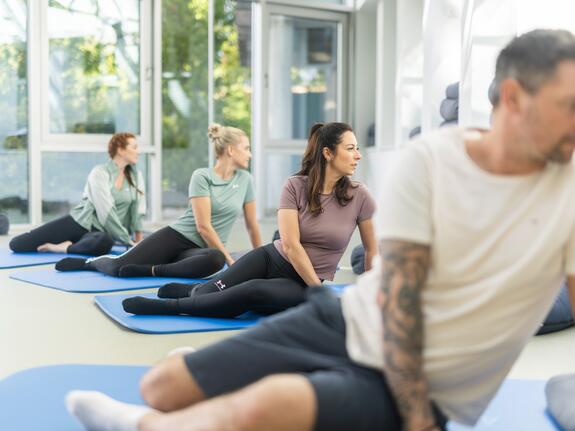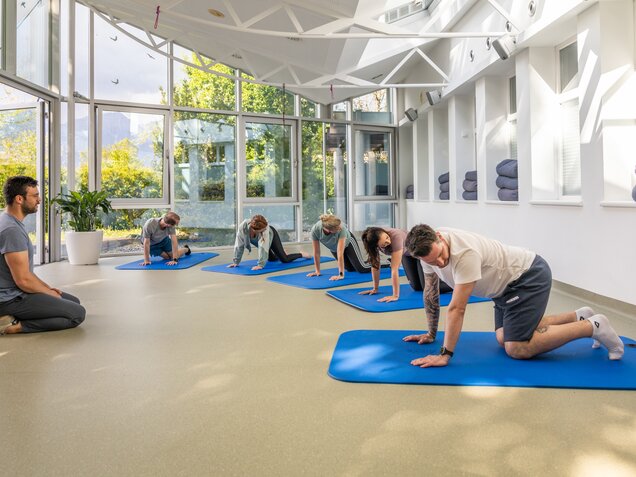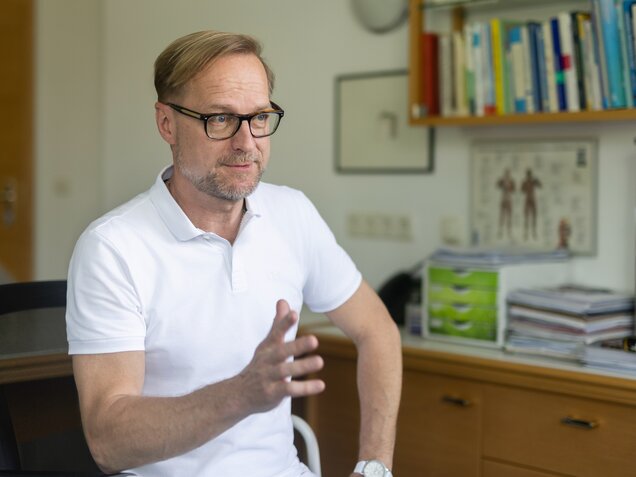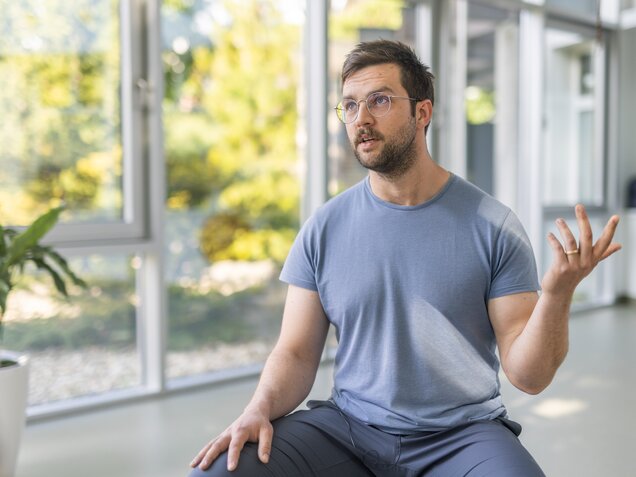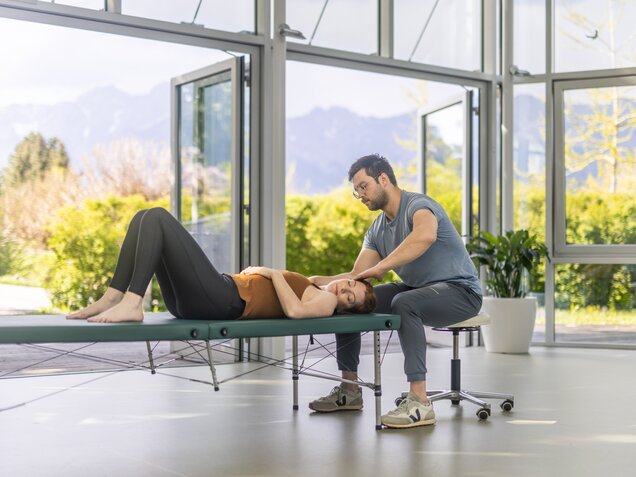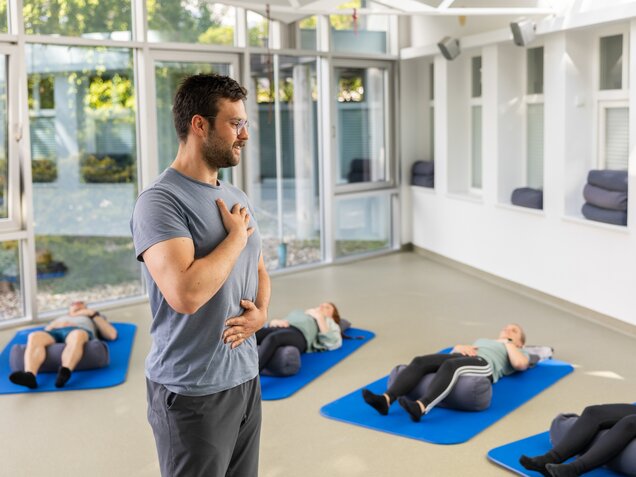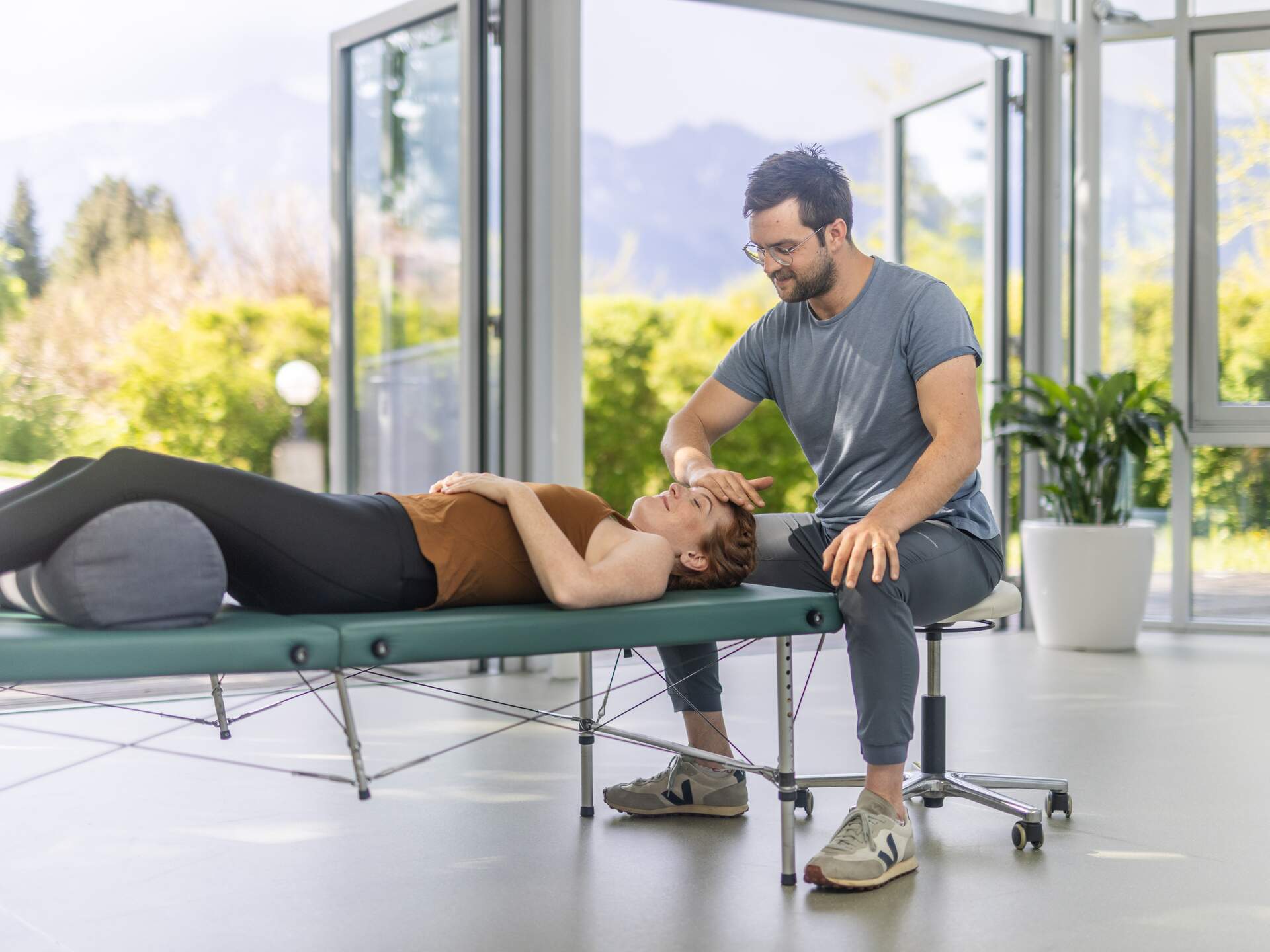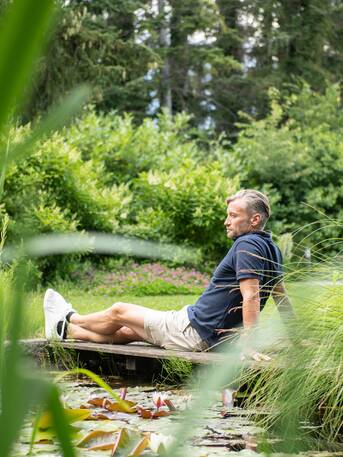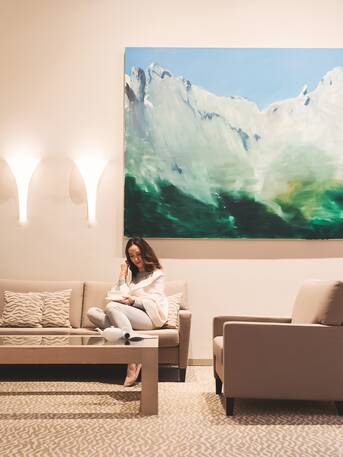Movement With Awareness
Moving with ease makes life feel lighter—both physically and mentally. The Feldenkrais® Method aims for exactly that: greater freedom of movement through heightened awareness. It is not classic gymnastics, but a subtle approach that connects thinking, feeling, and acting.
Feldenkrais at Park Igls
The Body as Teacher
At Park Igls Medical Spa Resort, this method is practiced and taught by experienced professionals like Max Stangl, as part of the holistic concept of Modern Mayr Medicine. What makes it so special? It not only engages muscles and joints, but also our nervous system, our relationship with our bodies—and our capacity to live with ease.
Rethinking Movement with the Feldenkrais Method
The method traces back to physicist and judo master Moshe Feldenkrais (1904–1984), who, following a serious knee injury, began exploring the principles of human movement. His findings laid the foundation for a therapeutic approach still practised worldwide.
Feldenkrais as a Learning Process
Understanding Movement
The Feldenkrais Method is more than physical work—it is a learning method. The aim is not to execute movements perfectly but to perceive them mindfully, explore them, and thereby develop new, more efficient patterns. Over time, this can alleviate chronic poor posture, tension, and pain.
The focus is not on “correct” imitation as in yoga or Pilates, but on personal discovery: “How do I move—and how might I move with more ease?” This question threads through every lesson.
Relief Through Movement
Gentle Rather Than Demanding
For individuals with chronic pain, back discomfort, shoulder–neck tension, or neurological conditions like Parkinson’s or MS, Feldenkrais can be a gentle yet effective alternative—or a complement—to conventional physiotherapy.
Chief Physician at Park Igls
Dr Peter Gartner
“With Feldenkrais, we relearn habitual movement patterns by breaking them down into components, reassembling them and reconnecting them. A fundamental difference from other movement or treatment methods is that it’s taught entirely through verbal guidance.”
Feldenkrais & Modern Mayr Medicine
A Powerful Combination
At first glance they may seem different, yet they complement each other in a strikingly logical way. Modern Mayr Medicine and the Feldenkrais Method both support bringing automatic patterns—to do with eating, breathing, or movement—into conscious awareness and optimising them.
In Feldenkrais, movements aren’t demonstrated—they’re verbally guided. This cultivates true self‑awareness and lasting learning. It also activates the autonomic nervous system and regenerates digestion, metabolism, and sleep quality.
Feldenkrais at Home
Small Impulses, Big Impact
At Park Igls, guests receive not only tailored sessions but also everyday exercises that fit seamlessly into daily life, such as:
To activate the autonomic nervous system
To relieve screen fatigue
For greater ease and joint protection
These are not “workouts” but small movement dialogues with yourself—ideal for self‑regulation during stress, inner restlessness, or digestive discomfort.
Quality of Life Through Feldenkrais
Awareness Through Movement
Feldenkrais at Park Igls is much more than a movement class—it’s an invitation to rediscover yourself. Whether you have complaints or simply wish to enhance your movement quality, reduce stress, or live more mindfully, Feldenkrais offers a gentle, effective, and sustainable tool for relaxation and stress regulation.
Tip
Try a session during your stay—often one lesson is enough to show what’s possible when movement is not “trained” but truly understood.
FAQs on Feldenkrais Therapy
The Feldenkrais Method is a body-based learning approach that refines and re-patterns movement through mindful awareness. Its aim is to develop more efficient and comfortable ways of moving.
Feldenkrais is particularly suitable for chronic pain, tension, back and neck discomfort, as well as neurological conditions such as Parkinson’s or MS. It can also provide supportive relief for stress and digestive complaints.
In contrast to physiotherapy or yoga, Feldenkrais does not involve demonstration. Rather than imitation, it emphasises personal experience of movement. The aim is not to train, but to learn—with awareness.
Conscious re-learning of habitual movements can help dissolve pain-inducing patterns. Clinical studies have shown notable improvements in individuals living with chronic pain.
Feldenkrais lessons typically take place while lying down or sitting. Through verbal guidance, gentle and exploratory movements emerge—inviting you to notice differences and explore new possibilities.
Gentle and non-straining, the method supports people of all ages—including young adults, seniors, and those recovering from illness or injury.
Even after a single session, many experience noticeable changes—more ease, less pain, or improved posture. Sustainable results develop through regular practice.
In Austria, Feldenkrais® is currently not covered by public health insurance. However, some private supplementary plans or health programmes may reimburse part of the cost—it’s worth checking.
